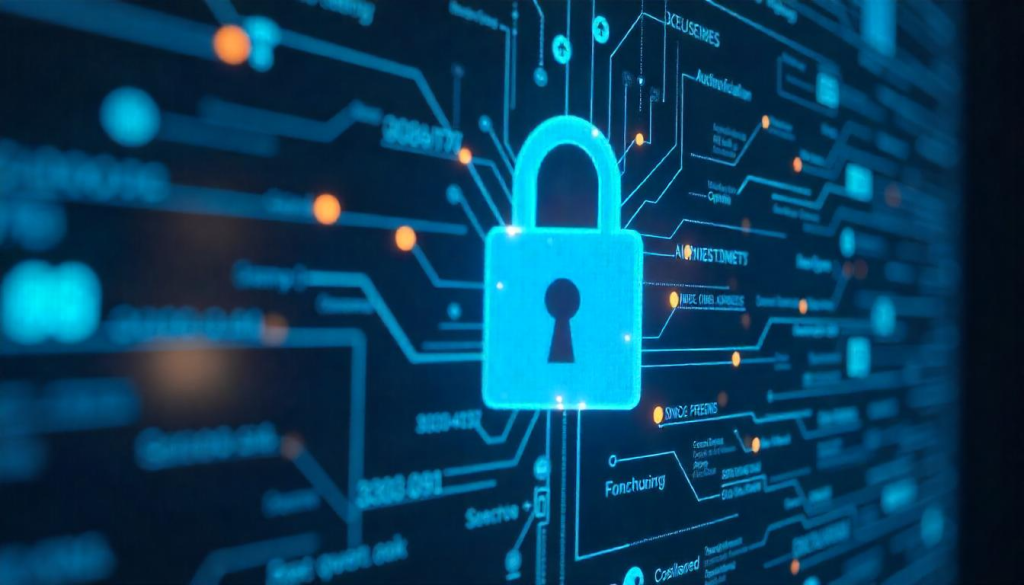When you hear the phrase “bank-level security,” it sounds serious—and it is. Whether you’re shopping online, managing your savings through an app, or just logging into your email, you’ve probably seen companies promise you “bank-level security.” But what does that actually mean? Let’s break it down in plain English. No jargon. Just facts, examples, and a human touch so you actually understand how it works—and why it matters to you.

What Does Bank-Level Security Mean?
Bank-level security refers to the highest standard of online safety measures used by banks to protect your personal data and money. It’s like a digital fortress, designed to keep hackers out and your sensitive information safe. Think of it as a multi-layered system of locks, alarms, guards, and surveillance—but in the online world. Just like a bank vault is hard to break into, bank-level digital systems are designed to be extremely difficult to breach.
Why Is It Important?
Let’s face it—we live online now. We shop, chat, bank, and even work using the internet. That means our private data—our passwords, account numbers, identity details—are floating around on servers.
Without proper protection, hackers could steal your:
-
Bank account information
-
Credit card numbers
-
Personal identity
-
Business secrets
This is where bank-level security comes in. It ensures that your information is encrypted, hidden, and guarded 24/7.
Key Features of Bank-Level Security
Here are the core features that make up bank-level security:
1. 256-bit Encryption
Let’s say you send a message to your bank. Before it leaves your phone, it gets scrambled using 256-bit encryption—the same technology the military uses. Only the bank’s system has the “key” to decode it. If someone tried to intercept it, they’d see a bunch of nonsense letters and numbers. Basically, it would take even the most powerful computer billions of years to crack it.
2. SSL Certificates
Ever notice the little padlock in your browser’s address bar? That means the website uses SSL (Secure Socket Layer) encryption. It’s like a secure tunnel between your device and the bank’s server. It keeps eavesdroppers out and protects data during transmission. No SSL? That’s a red flag—don’t trust the site.
3. Two-Factor Authentication (2FA)
This is a big one. Even if a hacker steals your password, they still need your phone or fingerprint to get in.
Two-factor authentication adds a second layer of protection, like:
-
A one-time code sent to your mobile
-
Fingerprint or face scan
-
An app-based approval system
With 2FA, even a stolen password won’t be enough.
4. Firewalls and Intrusion Detection
Banks use complex firewalls to block unauthorized access to their servers. Think of it as a digital security guard that constantly checks who’s knocking at the door. In case someone tries to sneak in, intrusion detection systems will sound the alarm and block the activity.
5. Regular Security Audits
Banks regularly test their own systems by hiring ethical hackers (aka white hat hackers) to try and break in. They also perform security audits to fix any weaknesses before bad actors find them.
Where Else Do You See Bank-Level Security?
Bank-level security isn’t just for banks anymore. It’s now used by:
-
Online payment apps like PayPal or Venmo
-
Budgeting apps like Mint or YNAB
-
E-commerce sites like Amazon or Shopify
-
Crypto wallets and exchanges
-
Cloud storage services like Dropbox Business
Basically, any service that handles sensitive or financial data should use bank-level protection.
Can You Trust Every Site That Claims “Bank-Level Security”?
Here’s where it gets tricky. Anyone can claim bank-level security, but not everyone truly offers it.
To check if a service is genuinely secure, ask yourself:
-
Does the site use HTTPS and show a padlock?
-
Does it offer 2FA login options?
-
Do they openly talk about their security practices?
-
Have they been involved in any data breaches?
If you can’t find clear answers, it’s worth being cautious. Your data is valuable—don’t hand it over lightly.
What You Can Do to Stay Safe
Even with top-notch security on their end, your behavior matters too. Here’s what you can do to keep your information safe:
✅ Use Strong Passwords
Avoid using “123456” or your pet’s name. Use a password manager if you need help generating and remembering strong, unique passwords.
✅ Turn on Two-Factor Authentication
If it’s available—use it. Always.
✅ Don’t Use Public Wi-Fi for Banking
Public networks can be easily hijacked. Wait till you’re on a secure, private connection.
✅ Keep Your Software Updated
Outdated apps and browsers have security holes. Updates fix them—so don’t ignore them.
✅ Watch for Phishing Scams
Never click on links in suspicious emails or texts pretending to be your bank. Always go directly to the official website.
Final Thoughts
Bank-level security isn’t just a fancy phrase—it’s a critical shield that protects your money, identity, and peace of mind in a digital world full of threats. The next time you’re using a finance app, shopping online, or transferring money, pause and ask: Does this site really treat my data like a bank would? If the answer is no, it’s time to rethink your options. Security is no longer optional—it’s essential.